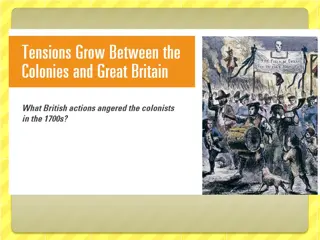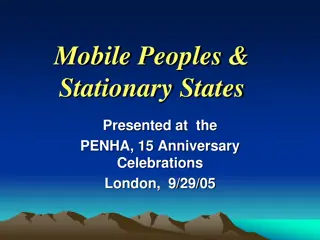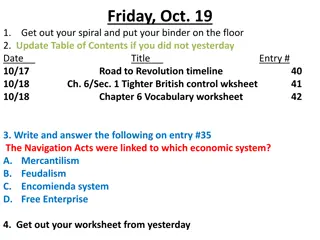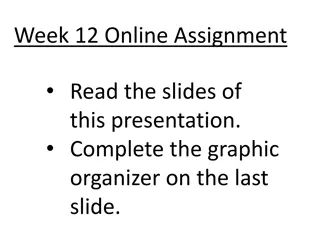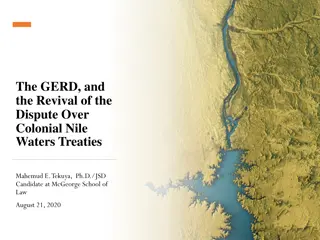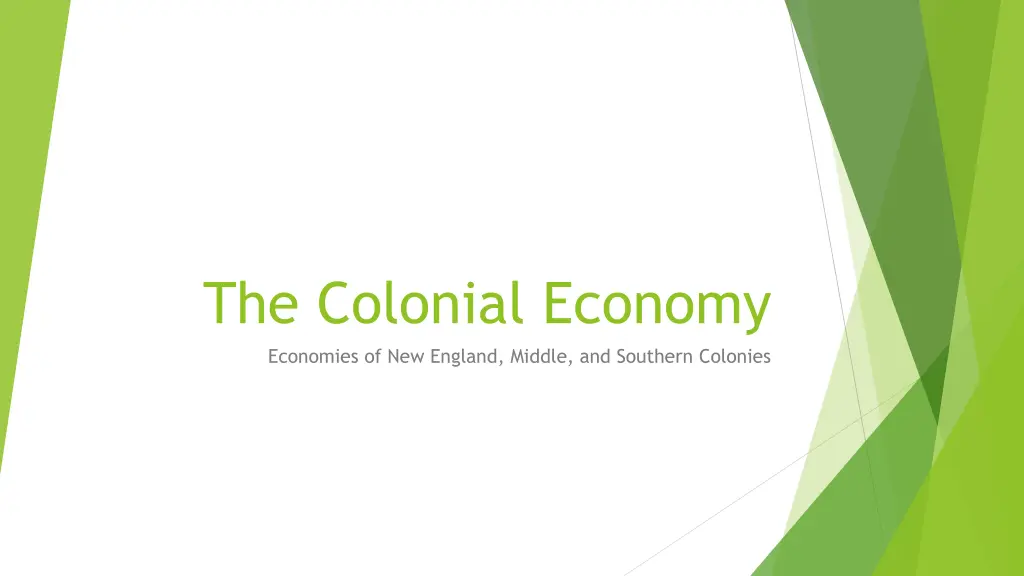
Colonial Economies of New England, Middle, and Southern Colonies
Learn about the distinct economies of the New England, Middle, and Southern colonies during the colonial period in America. Explore the challenges and industries that shaped each region, from subsistence farming in New England to cash crops in the Southern colonies. Discover how agriculture, trade, and the labor system influenced the economic development of these colonies.
Download Presentation

Please find below an Image/Link to download the presentation.
The content on the website is provided AS IS for your information and personal use only. It may not be sold, licensed, or shared on other websites without obtaining consent from the author. If you encounter any issues during the download, it is possible that the publisher has removed the file from their server.
You are allowed to download the files provided on this website for personal or commercial use, subject to the condition that they are used lawfully. All files are the property of their respective owners.
The content on the website is provided AS IS for your information and personal use only. It may not be sold, licensed, or shared on other websites without obtaining consent from the author.
E N D
Presentation Transcript
The Colonial Economy Economies of New England, Middle, and Southern Colonies
New England Colonies Economy Due to long winters and thin, rocky soil, it was difficult to farm effectively in the New England Colonies. Most farmers practiced SUBSISTENCE FARMING- producing enough to meet the needs of their families, with little left over to sell or trade. Children performed a lot of the labor, everyone in the family worked- spinning yarn, milking cows, fencing fields, and sowing and harvesting crops. Industries thrived in the New England Colonies. Many different craftspeople such as blacksmiths, shoemakers, furniture makers, gunsmiths, etc. Shipbuilding was an important New England industry. Lumber came from the forests. Fishing was also very important, predominately whaling for oil and whalebone.
Middle Colonies Economy Most people in the Middle Colonies were farmers. The soil was much more fertile and the region had a slightly milder climate than New England. Farmers planted and plowed much larger areas of land than New England. Cash Crops- crops that were grown to be sold easily in markets in the colonies and overseas (wheat/oats). Farmers sent wheat and livestock for shipment to New York City and Philadelphia, which became busy ports. By 1760, New York, with 14,000 people, and Philadelphia, with 19,000 people, were two of the largest cities in the American Colonies. Like the New England Colonies, the Middle Colonies also had industries such as carpentry, flour making, lumber mills, mines, and manufacturing. The Middle Colonies attracted many Scott- Irish, German, Dutch, and Swedish settlers. Creating a CULTURALLY DIVERSE- or variety, not found in New England.
Southern Colonies Economy The Southern Colonies had rich soil and warm climates that allowed farmers to plant large areas and produce harvests of cash crops, such as tobacco or rice. Most settlers in the South made their living from farming. A plantation was like a small village. It had fields stretching out around a cluster of buildings, including cabins, barns, and stables. Small plantations often had fewer than 50 enslaved workers while large ones typically had 200 or more. Plantation owners were the most wealthy and powerful of the common folk, they controlled economic and political life of the region.
Tobacco and Rice Tobacco was the principal cash crop in Maryland and Virginia and it required a lot of intensive labor. At first indentured servants were used to work in the fields, however, eventually southern planters would use enslaved Africans instead. Tobacco was a very profitable crop that helped make many plantation owners rich, often selling overseas to England. Rice proved to be an even more profitable crop than tobacco. Prices rose steadily as rice became popular in Europe. By the 1750 s, South Carolina and Georgia had the fastest- growing economies in the colonies. All of these crops relied heavily on the enslavement of Africans.
Slavery and The Triangular Trade By the time Europeans were sailing to the Americas, slavery was widely practiced in West Africa. Many West African Kingdoms enslaved those they defeated in war. The arrival of Europeans in the Americas created a huge new demand for enslaved workers. West African slave traders sold captives they gained through wars and raids to the Americas. Slavery and the slave trade became a major part of the colonial economy. Middle Passage- middle leg of the three- part route known as the TRIANGULAR TRADE. The Middle Passage terrible, enslaved Africans were chained together for more than a month on a crowded ship. Those who survived the Middle Passage faced another terror when they reached American ports, the slave market- where they were put up for sale.
Triangular Trade youtube.com/watch?v=PmQvofAiZGA
Life of a Slave Some enslaved Africans on plantations did housework, but most worked in the fields. Slave Codes- RULES GOVERNING THE BEHAVIOR AND PUNISHMENT OF ENSLAVED PEOPLE. Some did not allow enslaved workers to leave the plantations with written permission. Some made it illegal to teach enslaved people how to read or write. Punishments ranged from whipping for even minor misdeeds to hanging or burning to death for more serious crimes. Not all colonists believed in slavery. Many puritans refused to hold enslaved people. Quakers condemned slavery.

